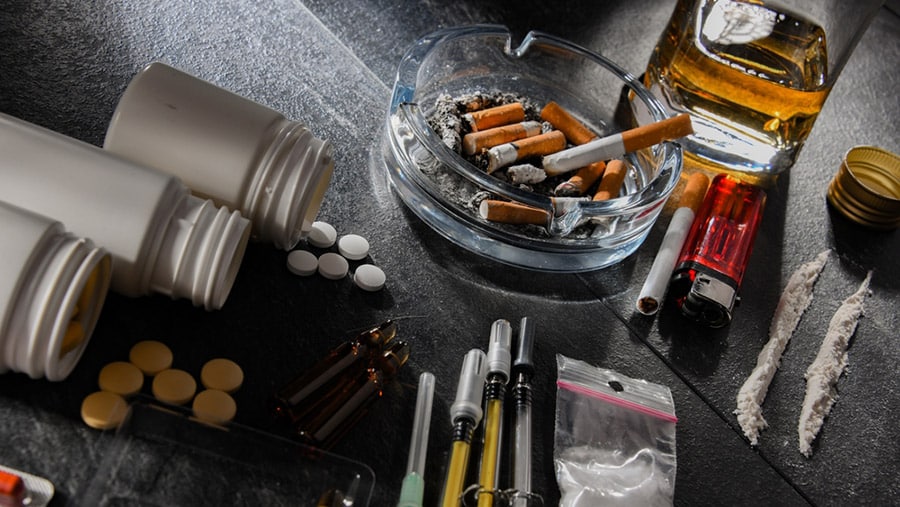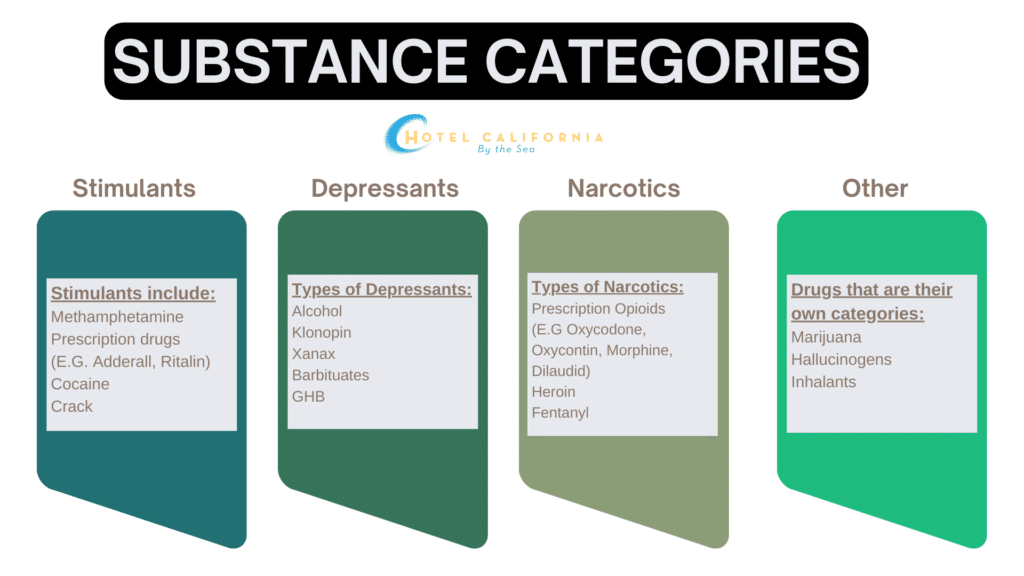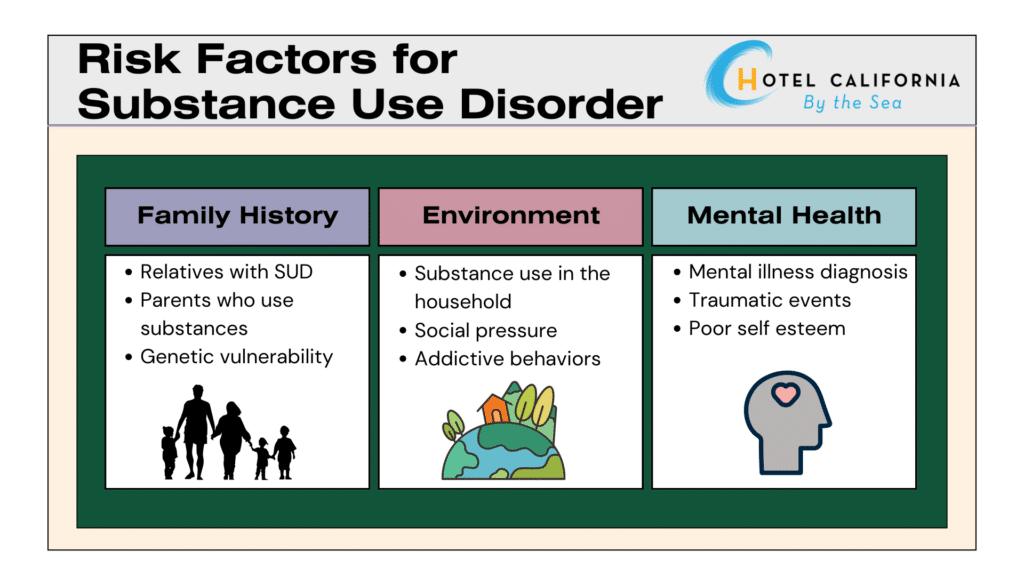What is the Most Addictive Drug?
The world has changed significantly over the last two decades alone. While technology and healthcare have advanced, we are seeing an alarming increase in addiction and overdose statistics. Since the beginning of the COVID pandemic in 2020, there has been a 23% increase in alcohol abuse alone. Drug abuse has increased 16% since that time as well.
The addictive nature of each substance varies depending on the administration method and context of use. Heroin can be highly addictive when injected, but smoking it may not be as habit-forming. Smoking a substance like crack-cocaine, on the other hand, can carry a higher risk of addiction. The stigma that comes with injecting drugs is often a deterrent in itself.
When looking at drugs in the context of addiction potential, it is important to look at their chemical makeup. Considering this information, we can compile a list of the top ten most addictive drugs.

Top Ten Most Addictive Drugs for Americans

Heroin
Heroin is an opiate derived from the poppy plant. Heroin is a highly addictive drug that can be in the form of a powder or a sticky, tar-like substance. Individuals engaged in substance abuse often choose to consume heroin through various methods, such as smoking, snorting, or injecting.
Heroin binds to the receptors in the brain’s reward system associated with pain relief and dopamine. It releases a large amount of these endorphins. This creates a sense of euphoria in the user. As heroin use increases, its euphoric effects diminish.
Users will need to consume a greater amount of the drug to experience the high they are seeking. Heroin addiction develops in a short amount of time.
Consuming a large amount of heroin increases the chance of overdose. Overdosing shuts down the body’s ability to breathe and quickly leads to death.
Crack
Derived from cocaine, crack is a highly addictive stimulant. Users dissolve cocaine and add a binder, such as baking soda. After this concoction dries, the liquid is broken into chunks or “rocks.” Dealers sell the drug based on weight.
Users primarily smoke crack, but it can also be injected. Smoking the drug induces a rapid and intense euphoria. However, the effects of crack are short lived. Users need to ingest a large amount of crack to continue the high.
Because of the euphoric and fast high of crack, users often crave the drug intensely as soon as they run out. These factors contribute to Crack being one of the most addictive drugs.
Fentanyl
Fentanyl is a powerful synthetic opioid. It binds to the same receptors that heroin does.
Fentanyl has gained increasing popularity in the last few years alone. It has also made its way into most other substances.
Users only need a small amount of the drug to achieve its euphoric effects. This makes Fentanyl much more appealing, as it is cheaper and easier to transport.
The potency of Fentanyl makes overdosing a much higher concern. The dosage of fentanyl in any given drug is so widely variable that overdose is essentially inevitable.
Methamphetamine (Meth)
People often abuse crystal meth, an amphetamine, for its extremely euphoric effects. It produces an intense high, and it doesn’t take much of the substance to achieve it. The surge in dopamine that Meth gives its users reinforces the use of it. This makes the user much more likely to continuously use meth.
Cocaine
Widespread societal acceptance contributes to cocaine being one of the most addictive drugs. People view cocaine as a “party drug” and combine it with alcohol.
Users can mix cocaine with other drugs like heroin or fentanyl. This practice is known as “speedballing”. When used with these substances, cocaine is able to cause heart damage.
Alcohol
Alcohol is among the most commonly abused substances, as it is socially and culturally significant. Alcohol Use Disorder (AUD) is the most common type of substance abuse disorder. Alcohol is widely acceptable and glorified.
Society is more accepting of having an issue with alcohol than with drugs. People often recognize the need for help with abnormal drinking much later than they would with drug abuse.
Alcohol disrupts how the brain communicates, impacting its structure and function. This interference particularly affects areas controlling balance, memory, speech, and judgment.
Benzodiazepines
Benzodiazepines are depressants that create sedation, relaxation, and euphoria. The most common brand names include Xanax, Valium, Ativan, and Klonopin. Users will take high doses of these medications either orally or by snorting them.
When abusing benzos, individuals often seek the numbing effect. These drugs have a high risk for overdose, as abuse of them can lead to respiratory depression.
Prescription Opioids
Doctors prescribe opioids to manage moderate to severe pain. Opioids are commonly prescribed on a short-term basis, such as after surgery or an injury. In some cases, doctors prescribe them on a more long term basis for chronic pain.
Prescription opioids carry a high risk of addiction. Anyone who takes them can develop an addiction to them.
The addictive nature of opioids results in withdrawal symptoms when stopping their use. This makes it hard for patients to come off them. Prescription opioids are often seen as the gateway into illegal narcotics.
Nicotine
Nicotine is available to those over the age of 21 in the United States. The legal age of consumption is 21. However, 8.5% of people aged 12 and older reported having nicotine dependence. 22% of that same group reported using nicotine within the last 30 days of the study.
Cigarettes are the most common source of nicotine. The rise of vaping and E-Cigarettes has posed a new threat to younger generations. Consuming nicotine in different fruit flavors without the lingering scent of cigarette smoke is appealing to teens.
Marijuana
Marijuana is becoming legal in more states than ever before. Marijuana in itself does not have the same physical dependence level as other drugs. However, it does have the potential to create a psychological dependence.
When consumed regularly, users can find it difficult to eat and sleep without it. Heightened anxiety and depression often occur. We should talk openly about the addictive aspects of using marijuana, even as it becomes more accepted and legal.
Each of these substances has unique factors contributing to their addictive nature. Circumstances, environments, and routes of administration all contribute to how addictive a substance is. Personal preference can also determine which substance is more addictive for an individual.
No specific order exists for ranking substances from most to least addictive. Research tells us that the aforementioned substances are within the top ten most abused drugs.
What puts you at risk for substance addiction?

Addiction affects all demographics of people. A few factors do put individuals at a higher risk. Those factors include:
- Family history of substance abuse
- Poor/no intervention in early substance use
- Parental substance use
- Childhood sexual abuse
- Being in social groups with peers who use substances
- Mental health issues
- Age of first use
- Using highly addictive substances
- Introduction to medical opioids because of surgery/injury
People can have some of these risk factors present in their lives and not end up addicted to substances. On the other hand, they may have none of these and end up with substance use disorder (SUD).
Addiction does not discriminate. Medical research has shown that certain genetic/environmental conditions do contribute to SUD. However, there is no clear answer as to why SUD develops.
Check Your Insurance Coverage for FREE
Find out if your insurance covers addiction treatment in minutes. We accept most insurance!
Long Term Drug and Alcohol Abuse Risks
Long-term substance and alcohol abuse present risks to both physical and mental well-being. Here are some key concerns:
Organ Damage: Chronic substance abuse can lead to severe damage to vital organs such as the liver, heart, and brain. Prolonged alcohol use may result in liver cirrhosis and cardiovascular problems.
Mental Health Implications: Long-term abuse increases the risk of mental health issues. These include anxiety, depression, and other psychiatric disorders.
Relationship Strain: Substance abuse can create distance and communication breakdowns with family and friends.
Financial Problems: The costs of sustaining a substance or alcohol habit can lead to financial troubles. This impacts an individual’s ability to meet basic needs.
Legal Consequences: Long-term abuse may result in legal issues, including arrests and criminal charges.
Tolerance and Dependence: Over time, individuals may develop tolerance and dependence on the substance. This makes it increasingly challenging to quit without professional intervention.
Health Complications: Beyond specific organ damage, long-term substance abuse can lead to a range of health complications. Substance abuse weakens the immune system, leading to an increased susceptibility to illnesses.
Addressing these risks requires timely intervention, rehabilitation, and ongoing support. Treating substance abuse promptly is crucial to reduce long-term consequences.
Reach out to Hotel California by the Sea
We specialize in treating addiction and other co-occurring disorders, such as PTSD. Our Admissions specialists are available to walk you through the best options for treating your addiction.
Comprehensive Alcohol and Substance Abuse Treatment
Hotel California by the Sea offers comprehensive treatment programs. Our approach encompasses various evidence-based therapies, counseling, and holistic methods. We provide individuals with a well-rounded and personalized recovery experience.
Through a combination of medical expertise and therapeutic interventions, we address the root causes of addiction. We equip clients with the tools needed for sustained recovery. Our dedication to addressing the diverse needs of clients sets Hotel California by the Sea apart.
In navigating the landscape of addiction, we recognize the significance of tailored treatment plans. This comprehensive approach extends to answering questions such as “What is the most addictive drug?” through education and awareness. We address not only the physical but also the psychological and emotional aspects of substance abuse. Our staff empowers individuals on their journey to lasting recovery.
References:
https://nida.nih.gov/publications/drugfacts/heroin
https://nida.nih.gov/research-topics/methamphetamine
https://nida.nih.gov/research-topics/alcohol
https://www.mayoclinic.org/diseases-conditions/drug-addiction/symptoms-causes/syc-20365112
